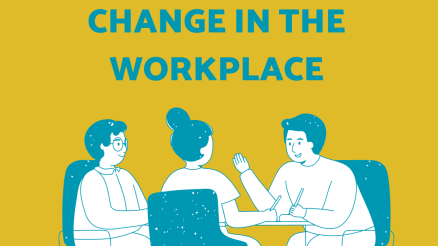Do you know that loneliness is a health hazard equal to smoking 15 cigarette daily?
And problem is that people are increasingly becoming lonely than ever.
Even though social media and advancement in technologies has brought the world closer but individual human being spends more time in isolation.
This issue is not only limited to home or community level but it has become a real problem at workplace.
Employees are less connected with each other and they are working in isolation. The COVID 19 pandemic has pushed people further into isolation with less physical interaction. This results into many mental health problems and also negatively affect their productivity.
Let’s learn in this article that what does it mean being lonely at work, what are its causes and how to deal with loneliness in the workplace.
What is Loneliness in the Workplace?
Every human desire to have a sense of attachment and a connection with others around them. They experience loneliness when they don’t have much emotional support.
Loneliness in the workplace refers to strong emotions when employees feel that there is no one around them whom they feel connected to.
However, if they continue to feel lonely for an extended period of time, they will experience burnout and eventually see a reduction in their performance and productivity.
People can be lonely in a crowded workplace and they might feel socially connected to other co-workers even working remotely away from office.
What causes loneliness in the Workplace?
There may be different reasons for every individual and every workplace but here are the common causes of loneliness in the workplace.
Technology
One of the biggest causes of loneliness is the modern technology. Now employees have communication tools and gadgets and they connect to their co-workers through gadgets.
They prefer to communicate through emails instead to going to others desk and converse with their colleagues. They use different applications to have informal chat rather than spending time together.
Culture of remote working
For different reasons modern organizations are moving towards hybrid work culture. COVID-19 pandemic has accelerated this transformation and now culture of remote working has become a norm.
Remote working has its own benefits but it has affected social health of employees. It has made employees lonely and isolated .
Working Conditions
At some workplace, working conditions are irregular and shift schedules are erratic. This also cause loneliness even though such workplaces are crowded.
There employees have less chance to spend time together with their co-workers and they work just like machines.
Work Stress
Work stress has a strong impact on workers. It causes depression and anxiety and ultimately has a negative effect on employees’ health. But work-related stress also makes employees lonely.
They have less time to connect to other colleagues when they are under stress. And they even avoid meeting people when they are facing depression and anxiety due to work.
How loneliness affects employees in the Workplace
Let’s take a look at how loneliness affects employees in the workplace.
Loss of interpersonal relationships
Workplace loneliness causes emotional disconnect. When people are lonely, they begin to retreat from social gatherings. They cease to communicate and interact with their colleagues. They quit participating in activities that require collaborative work.
As a result, they are no longer included in activities or decision-making processes by other employees. This disrupts good peer connections and can lead to internal tensions.
Deterioration of mental health
Isolation can lead to melancholy, anxiety, and, in some extreme situations, suicide. Lonely people may feel separated or estranged from those around them.
They believe that no one understands them, that they are unlikeable, and that no one cares about them. Loneliness fosters feelings of uncertainty and self-doubt. As a result, they withdraw from others, which leads to unpleasant thoughts and emotions.
Threat to physical health
When people believe they don’t have an emotional connection with somebody or don’t have anyone to count on, they resort to smoking, drinking alcohol, or becoming hooked on narcotics.
Loneliness also increases the risk of major cardiovascular disorders. A 2016 research of 181,000 adults discovered that loneliness increased the risk of coronary heart disease by 29%.
Decreased employee engagement
Workplace loneliness relates to feeling alienated and separated from work and peers in the setting of an organization. Employees become emotionally alienated from the organization and its success because they lack the desired connection with their colleagues.
Their dedication to the organization suffers as a result of a lack of belonging. Employees are rarely involved in the functions within the organization or crucial decision-making procedures. As a result, employee engagement suffers.
Turnover
Long-term workplace loneliness might lead to employees leaving the firm. Lonely employees have little attachment to their work and organization, so their motivation to work and perform is poor.
Their sense of belonging to the organization is very low, and they believe they serve no purpose inside it. This may cause them to abandon the organization.
How to deal with loneliness in the Workplace
Humans are social by nature so they need meaningful interactions that are essential for overcoming loneliness.
So, the greatest method to combat workplace loneliness is to foster a culture of connection and community. Here are a few possibilities:
Examine the situation
If you feel that anyone or your colleague is lonely or isolated, work with them to create trust. Suggest that they take the Loneliness Scale test. Make it a point to explain why you think the test is a good idea, and to assure them that it is fully optional and that any results will be kept confidential.
Otherwise, you run the danger of alienating them. Their test results will tell you how connected they are and help you find any areas that need improvement.
Change your working process
Your organization’s working procedures and processes may be making it harder for its employees to form meaningful relationships.
For example, you may work in a closed-plan workplace, where employees are physically separated by the arrangement. Perhaps you work in a highly competitive atmosphere where, instead of healthy rivalry, people have grown distrustful and aggressive towards one another.
To overcome this, conduct a study and experiment with new ways of working. However, before putting your ideas into action, make sure you receive approval from senior management; any big modifications will require their consent.
Create a team with a common goal
It’s essential to engage your team and people around in the large significance of work.
At the same time, keep an eye out for bad behaviours that could harm team spirits, such as rudeness, bullying at workplace or harassment, and make it your job to deal with them efficiently.
Communicate clearly with your team about the types of behaviours you want to see and work with individuals to build any interpersonal skills that they may need.
This will assist to avoid conflict and solitude, and new hires will likely “fit” better with the rest of the team because their beliefs and purpose are more aligned with the larger business.
Encourage positive relationships
People cannot be forced to become friends. However, you may encourage people to establish friendships by providing opportunities for collaboration, planning enjoyable team-building activities, and promoting inclusive and acceptable social events.
However, keep in mind that these activities may only go you so far. After all, someone can have hundreds of LinkedIn connections and still feel lonely.
Rather than simply gathering as many contacts as possible, urge your team to target high-quality connections. This will make the relationships they do build more rewarding and valuable.
Remember the minor details
Even the tiniest gestures can make a huge effect. Making someone a cup of coffee or simply remembering to say “hello” in the morning will demonstrate that you care and that their well-being is important to you. Random acts of kindness like this will almost certainly have a good ripple effect on the rest of your staff.
If you’re a manager, don’t forget to prioritize one-on-one meetings. These should provide a judgment-free environment for team members to express their feelings and views to you.
Even if you’re busy, avoid cancelling these meetings and use them to address matters other than urgent goals and duties.
Combat exhaustion
The more tired someone is, the lonelier they can feel. Furthermore, an increasing number of people are weary of their jobs. In a 2016 poll, nearly half of the respondents agreed that this was the case.
Make certain that your team members do not become exhausted. Encourage them to work regular and reasonable hours, take appropriate breaks, and establish clear limits to maintain their work-life balance. And remember to take your counsel.
Conclusion
Loneliness is a prevalent and rising problem in modern culture, and it can have a severe impact on personal wellbeing as well as a bad influence on workplace performance. Building a culture of connection and community is one of the most important approaches to addressing and avoiding loneliness at work. Its the responsibility of managers to know and learn how to deal with loneliness in the workplace and take necessary steps to address this problem.



